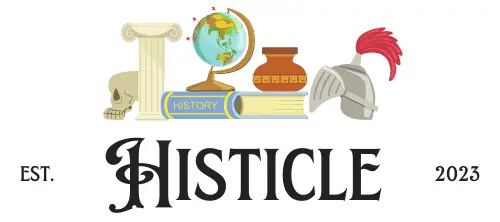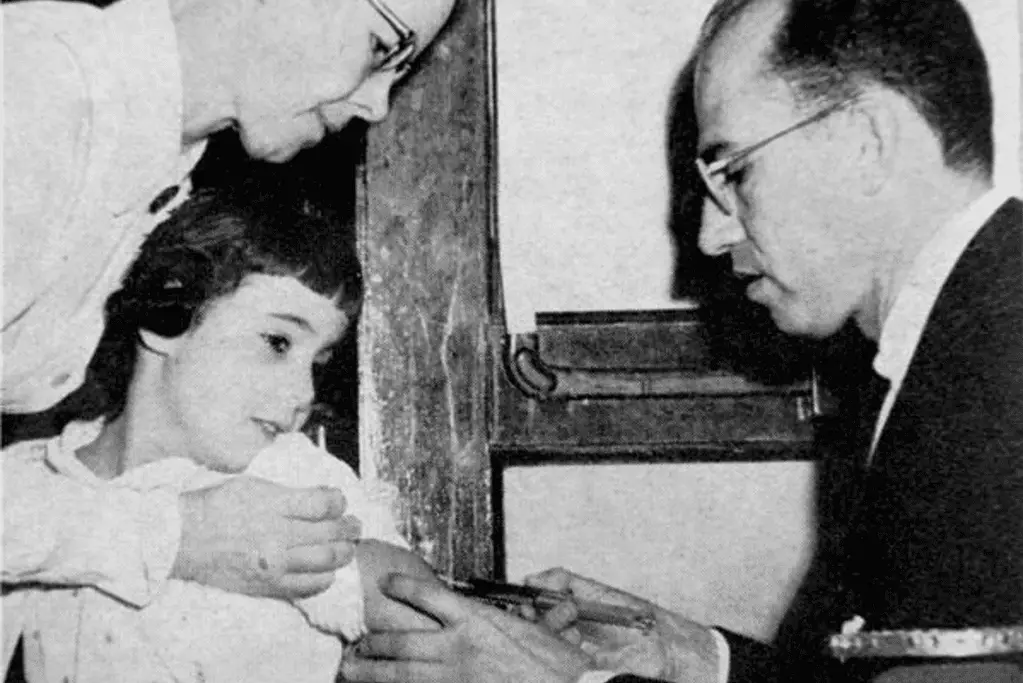
Diving into the world of historical medical breakthroughs is like hopping on a rollercoaster of intellect, grit, and downright genius.
Over the last two centuries, we have witnessed some of the most game-changing, “drop-the-mic” moments in medical history
Think about it: in the late 18th century, the concept of germ theory wasn’t even on the radar, and fast-forward to today, we’re literally editing genes!
As we gear up to explore these 14 iconic milestones, prepare to be awed by the brilliance and tenacity of the human spirit.
14 historical medical breakthroughs that have revolutionized healthcare in the modern era:
- Smallpox Vaccine (1796)
- Anesthesia (1840s)
- Germ Theory of Disease (1860s)
- X-rays (1895)
- Insulin for Diabetes (1921)
- Penicillin (1928)
- Heart-Lung Machine (1953)
- Polio Vaccine (1955)
- MRI (Magnetic Resonance Imaging) (1970s)
- Laparoscopic Surgery (1980s)
- Robot-Assisted Surgery (2000s)
- Human Genome Project Completion (2003)
- CRISPR Gene Editing (2012)
- Targeted Cancer Therapies (2000s)
From the birth of vaccines to the dawn of robot-assisted surgeries, this journey underscores how far we’ve come in such a relatively short span of time.
So, buckle up! We’re about to take a deep dive into the captivating evolution of modern medicine and the trailblazing discoveries that have defined it.
14 Pioneering Historical Medical Breakthroughs Listed
Kicking off our exploration of historical medical breakthroughs, the smallpox vaccine undoubtedly claims a prime spot.
As the first item on our list, this monumental discovery heralded a new era in preventive medicine and set the stage for eradicating a once-devastating disease.
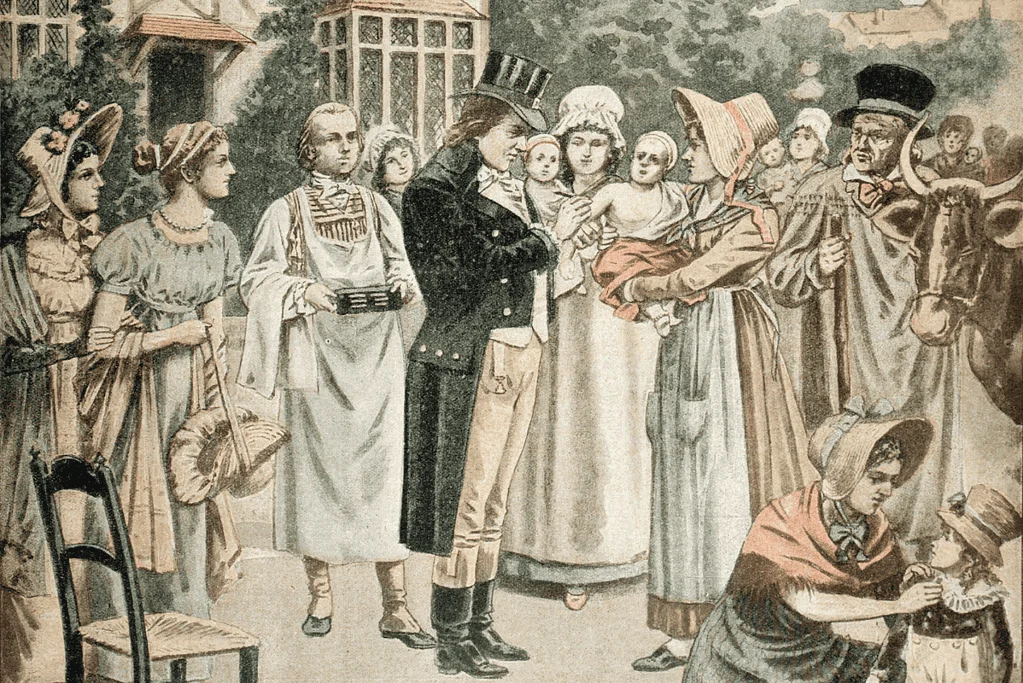
1. Smallpox Vaccine (1796)
Origins of a Groundbreaking Idea
Long before it became one of the most significant historical medical breakthroughs, the concept of vaccination had its roots in an ancient practice called variolation.
Originating in China and India, this method involved exposing a person to a small dose of smallpox to induce a milder form of the disease, thus conferring immunity.
By the 18th century, variolation had made its way to Europe and was practiced, albeit with mixed results.
Some patients achieved immunity, while others faced severe disease or even death.
Jenner’s Cowpox Connection
In the late 18th century, a British physician named Edward Jenner keenly observed that milkmaids who contracted cowpox, a disease similar to smallpox but much less severe, seemed immune to the dreaded smallpox outbreaks.
In 1796, taking a bold step, Jenner extracted pus from a cowpox sore on a milkmaid’s hand and introduced it into the arm of an 8-year-old boy named James Phipps.
James developed a mild fever but recovered swiftly.
Later, when Jenner exposed the boy to smallpox, he remained unaffected, thus confirming his hypothesis and laying the foundation for modern vaccination.
Eradicating a Global Scourge
Jenner’s cowpox vaccine began to gain traction in the early 19th century.
Governments and health organizations recognized its potential in combating the deadly smallpox outbreaks that had claimed countless lives worldwide.
By the 20th century, widespread vaccination campaigns, backed by global cooperation, were launched to eradicate smallpox.
These relentless efforts paid off in 1980, when the World Health Organization officially declared smallpox eradicated – a monumental victory for humanity and a testament to the power of vaccination.
For more on smallpox and 9 other outbreaks throughout history check out my post From Justinian to COVID-19: The Impact of 10 Key Pandemics Throughout History!
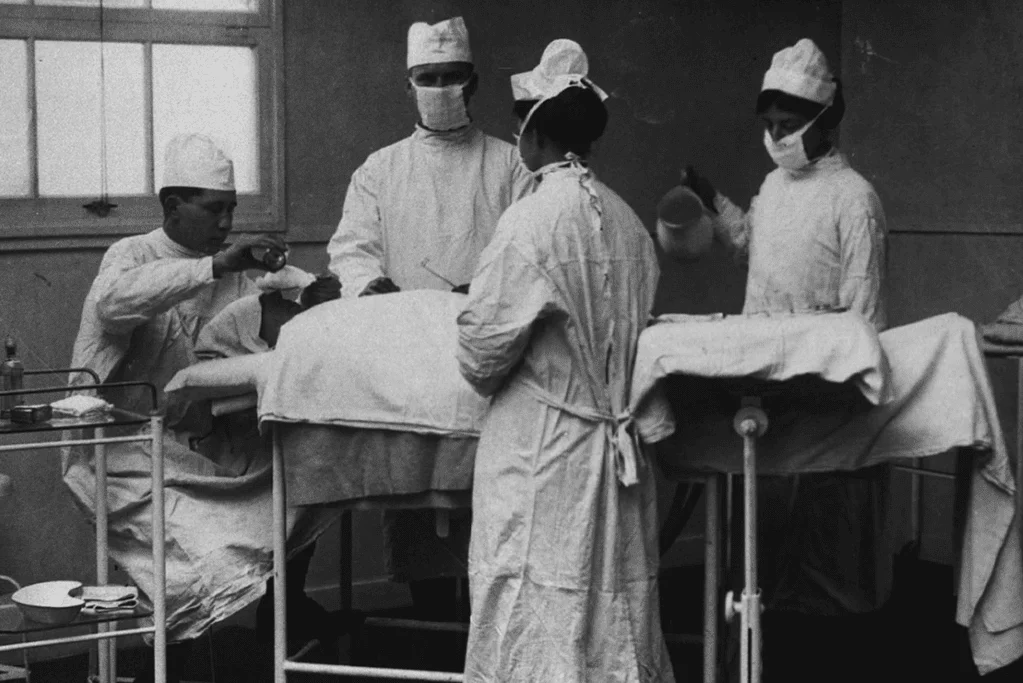
2. Anesthesia (1840s)
From Ancient Remedies to Scientific Revelations
Anesthesia’s journey, like many historical medical breakthroughs, is rooted in ancient practices. Civilizations from the Greeks to the Egyptians used herbs and opiates to induce sleep or numb pain during surgical procedures.
For instance, the Sumerians used opium poppies as early as 4000 BC and ancient Chinese surgeons employed acupuncture and other techniques to block pain.
However, these methods were rudimentary and often unreliable, meaning surgery was a last resort and highly dreaded procedure for centuries.
Ether Frolics to Medical Marvel
The 19th century marked a turning point for anesthesia.
In the 1840s, recreational events dubbed “ether frolics” showcased the euphoric effects of ether.
Observing this, American dentists, including Horace Wells and William T.G. Morton, began experimenting with nitrous oxide (laughing gas) and ether to relieve dental pain.
Morton’s successful public demonstration of surgical anesthesia using ether at Massachusetts General Hospital in 1846 was a game-changer.
This event transformed surgery from a torturous ordeal into a more humane and precise medical practice.
The Era of Modern Anesthetics
Post the ether demonstration, the world of medicine quickly recognized the immense potential of anesthesia.
By the late 19th and early 20th centuries, safer and more effective agents, such as chloroform, began to gain popularity.
The 20th century saw the rise of regional anesthesia, safer inhalational agents, and intravenous drugs.
Today, thanks to continuous advancements, anesthesia allows for a vast range of intricate procedures, ensuring patient comfort and safety.
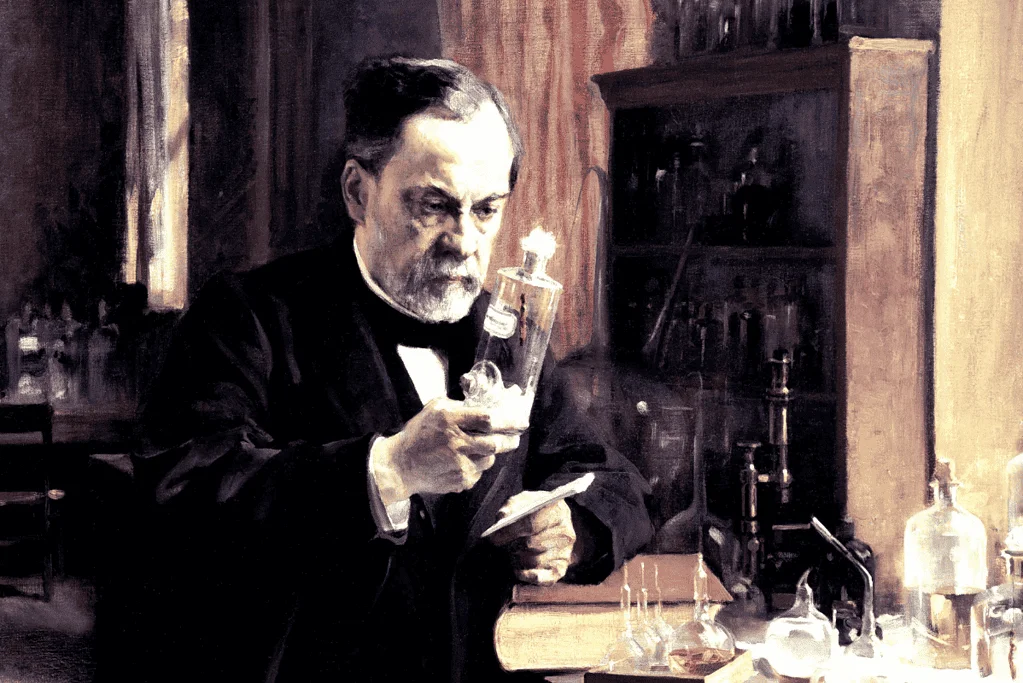
3. Germ Theory of Disease (1860s)
Foundations in a Microscopic World
The idea that tiny organisms might cause diseases wasn’t entirely new, but before the 19th century, such beliefs were scattered and not scientifically validated.
Miasma’s theory, posited that diseases like cholera or the Black Death were caused by polluted air, dominated medical thinking.
This muddled understanding often led to ineffective and sometimes harmful treatments.
It wasn’t until the further development of microscopes, a Renaissance-era invention capable of seeing tiny organisms, that a clearer picture began to emerge.
Pasteur and Koch: Titans of Germ Theory
The 1860s brought about groundbreaking work from two scientific giants: Louis Pasteur and Robert Koch.
Pasteur, a French chemist, disproved the age-old belief in spontaneous generation, demonstrating that microorganisms came from other living things, not the air.
He also linked germs to silkworm diseases, proving that a specific germ caused a specific disease.
Meanwhile, in Germany, physician Robert Koch was developing methods to isolate and grow bacteria, leading to his identification of the bacteria responsible for tuberculosis and cholera.
Together, their discoveries firmly established the germ theory of disease, revolutionizing medical science.
Ripples Through Medicine and Beyond
The acceptance of the germ theory of disease was among the most pivotal historical medical breakthroughs.
It shifted the blame from “bad air” and supernatural forces to identifiable microorganisms.
This understanding drove the development of antiseptics, sterilization techniques, vaccines, and antibiotics.
Simple handwashing, promoted by Hungarian physician Ignaz Semmelweis even before germ theory’s widespread acceptance, became crucial in the battle against infections.
The theory set medicine on a path of evidence-based practices and laid the foundation for microbiology.
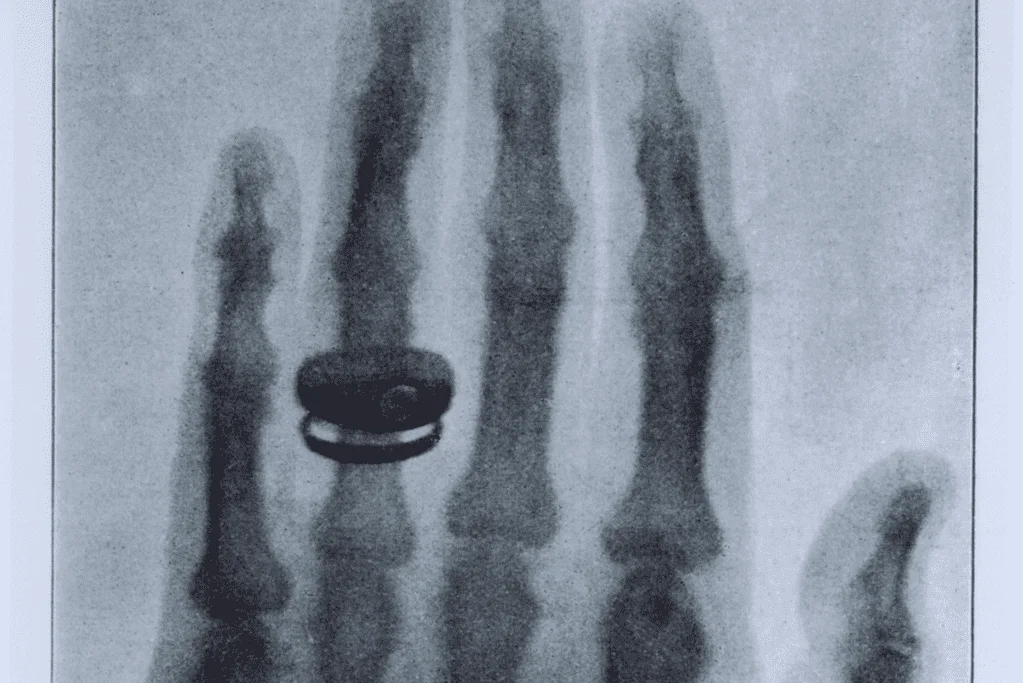
discoverer of X-rays, German scientist Wilhelm Conrad Roentgen
4. X-rays (1895)
Peering into the Unseen: A Serendipitous Discovery
In the annals of historical medical breakthroughs, the discovery of X-rays in 1895 stands out as a combination of scientific curiosity and sheer serendipity.
Wilhelm Conrad Roentgen, a German physicist, was experimenting with cathode rays when he noticed a mysterious glow in his lab.
This glow, emanating from a fluorescent screen some distance from his experimental apparatus, was perplexing as it occurred even when the cathode ray tube was shielded.
Intrigued, Roentgen quickly deduced that a new type of ray, which he modestly named “X” for unknown, was responsible.
A Revolution in Medical Diagnosis
Upon further experiments, Roentgen realized the profound implications of his discovery.
He took an X-ray photograph (or radiograph) of his wife’s hand, capturing the stark contrast between her bones and flesh—a landmark image that would send ripples through the medical community.
Almost immediately, the medical field recognized the game-changing potential of X-rays.
For the first time in history, doctors could non-invasively view the internal structures of a living patient.
Broken bones, swallowed objects, and later, tumors and lung diseases could now be diagnosed with unprecedented accuracy.
Challenges, Progress, and Lasting Impact
While the benefits of X-rays were undeniable, the early days weren’t without challenges.
The invisible rays posed risks, with many early adopters suffering burns or other radiation-induced conditions due to prolonged exposure.
However, protective measures were implemented as an understanding of radiation safety grew.
Over the decades, X-ray technology evolved, with advancements in imaging clarity and the advent of computed tomography (CT) scans.
Today, X-rays remain a cornerstone of diagnostic medicine, a testament to Roentgen’s discovery and the continuous drive for innovation in healthcare.
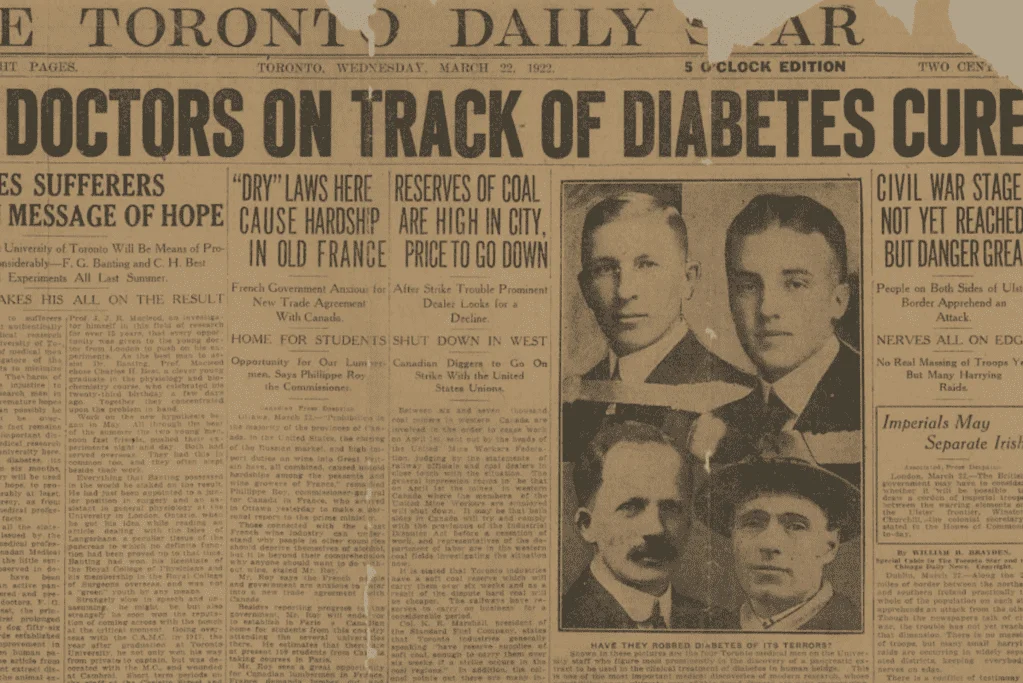
5. Insulin for Diabetes (1921)
Desperation Before Discovery
Before the 20th century, a diagnosis of diabetes was a grim affair.
The only recognized treatment was the “starvation diet,” which did little more than prolong the inevitable.
Patients, especially those with Type 1 diabetes, faced a painful and swift disease progression.
The medical community’s understanding of diabetes was limited to its symptoms, with no viable solutions.
The need for a breakthrough was dire as the death toll from diabetes complications mounted.
The Breakthrough at Toronto
The winds of change began to blow in 1921 at the University of Toronto.
Frederick Banting, a relatively unknown surgeon with an idea, partnered with Charles Best, a young medical student.
Their objective was straightforward: isolate the secreted substance from the pancreas, which is believed to regulate blood sugar.
Their experiments on dogs led to the discovery of a pancreatic extract, which they named “insulin.”
Upon administering this extract to diabetic dogs, they witnessed a rapid and dramatic drop in blood sugar levels.
With further refinement in collaboration with medical research scientist James Collip, insulin was ready for human trials.
The first patient, a 14-year-old boy named Leonard Thompson, experienced a remarkable recovery, heralding a new era in diabetes treatment.
From Death Sentence to Manageable Condition
The impact of insulin’s discovery was profound and immediate.
What was once a terminal disease now became a manageable condition.
News of this life-saving treatment spread like wildfire, bringing hope to countless sufferers worldwide.
The subsequent years saw the rapid commercial production of insulin, saving millions of lives.
While challenges remained, such as ensuring purity and determining correct dosages, the trajectory of diabetes treatment had forever changed.
Today, insulin remains a cornerstone of diabetes management, a testament to that groundbreaking work in a modest Toronto lab.
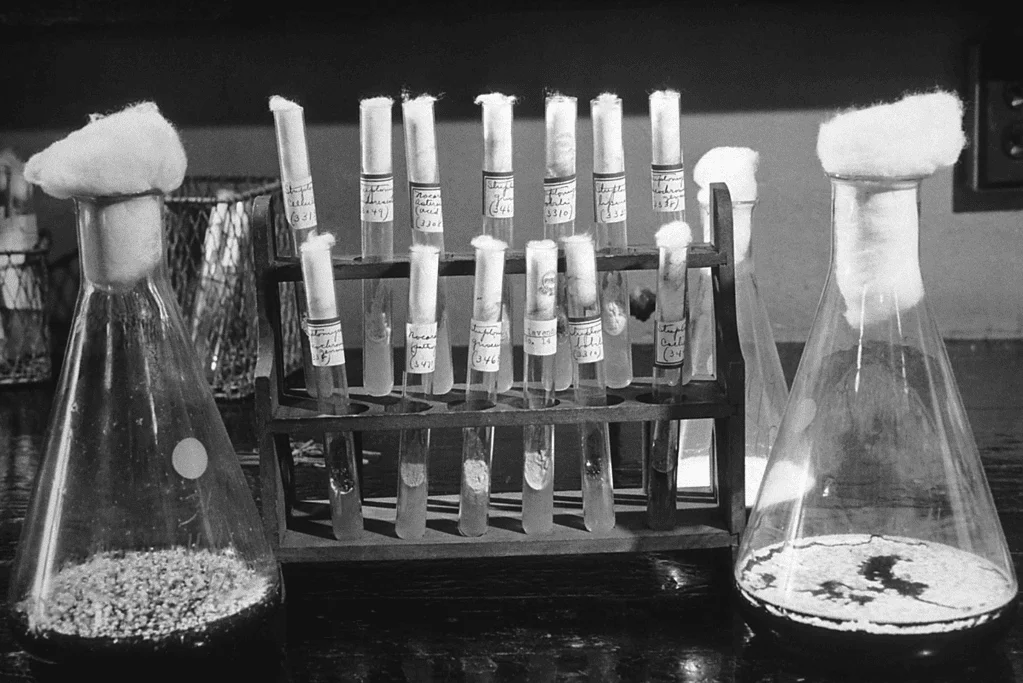
6. Penicillin (1928)
Accidental Beginnings and Mysterious Molds
Like some of history’s best stories, the tale of penicillin starts with a bit of serendipity.
In 1928, Alexander Fleming, a Scottish bacteriologist working at St. Mary’s Hospital in London, returned from a vacation to find his petri dishes of Staphylococcus bacteria colonies had been contaminated by mold.
Most would’ve discarded the dish, but Fleming noticed something peculiar: the bacteria were being destroyed around the mold.
The strain of Penicillium notatum mold was secreting a substance that effectively killed the bacteria.
Fleming had stumbled upon the world’s first true antibiotic.
From Lab Curiosity to Medical Marvel
While Fleming recognized the potential of his discovery, producing penicillin in significant quantities posed a considerable challenge.
The 1930s saw efforts to refine and produce the drug, but progress was slow.
It wasn’t until World War II, when the urgent need for effective treatments for wounded soldiers became paramount, that penicillin’s true potential was realized.
A team of scientists, including Howard Florey and Ernst Boris Chain, developed methods for mass production.
By the mid-1940s, penicillin was being produced on a large scale, revolutionizing the treatment of bacterial infections and saving countless lives on the battlefield and beyond.
The Dawn of the Antibiotic Era
The introduction of penicillin marked the beginning of the antibiotic era, forever changing the face of medicine.
Diseases that were once death sentences, like bacterial pneumonia or strep throat, became treatable.
The post-war era saw a boom in antibiotic research, leading to the discovery and production of many other antibiotics.
However, with great power came great responsibility.
Overuse and misuse have led to the emergence of antibiotic-resistant strains of bacteria.
Despite these challenges, penicillin’s discovery remains a testament to the incredible impact of curiosity, observation, and persistence in scientific advancements.

7. Heart-Lung Machine (1953)
A Dream of Bypassing the Heart
Before the 1950s, the intricacies of the human heart remained largely a mystery, primarily because surgeons had no means to operate on it directly.
The heart’s ceaseless beating and the constant blood flow posed significant challenges to direct surgical intervention.
A device that could temporarily take over the heart’s functions, allowing it to be still and blood-free during surgery, was the stuff of medical dreams.
This need set the stage for one of the most transformative devices in cardiac surgery: the heart-lung machine.
Gibbons’ Historic Innovation
Dr. John H. Gibbon, an American surgeon, had witnessed the devastating effects of conditions requiring direct heart intervention.
Motivated by the tragic loss of a young patient, he spent over two decades researching and developing a machine that could replicate the functions of the heart and lungs.
His prototype, known as the heart-lung machine, worked by oxygenating the blood and then pumping it back into the patient, bypassing the heart and lungs.
In 1953, Gibbon successfully utilized his machine in an open-heart surgery on an 18-year-old patient, marking a monumental leap in cardiac surgery capabilities.
Redefining the Boundaries of Surgery
The introduction of the heart-lung machine heralded a new era in medicine.
Complex cardiac conditions that were once deemed inoperable became treatable.
The machine paved the way for cardiac surgeries, including valve repairs and replacements, congenital defect corrections, and even heart transplants.
While the device has undergone significant refinements, its core principles remain unchanged.
With its ability to momentarily “replace” our most vital organs, the heart-lung machine is a testament to human ingenuity and the relentless pursuit of medical advancement.
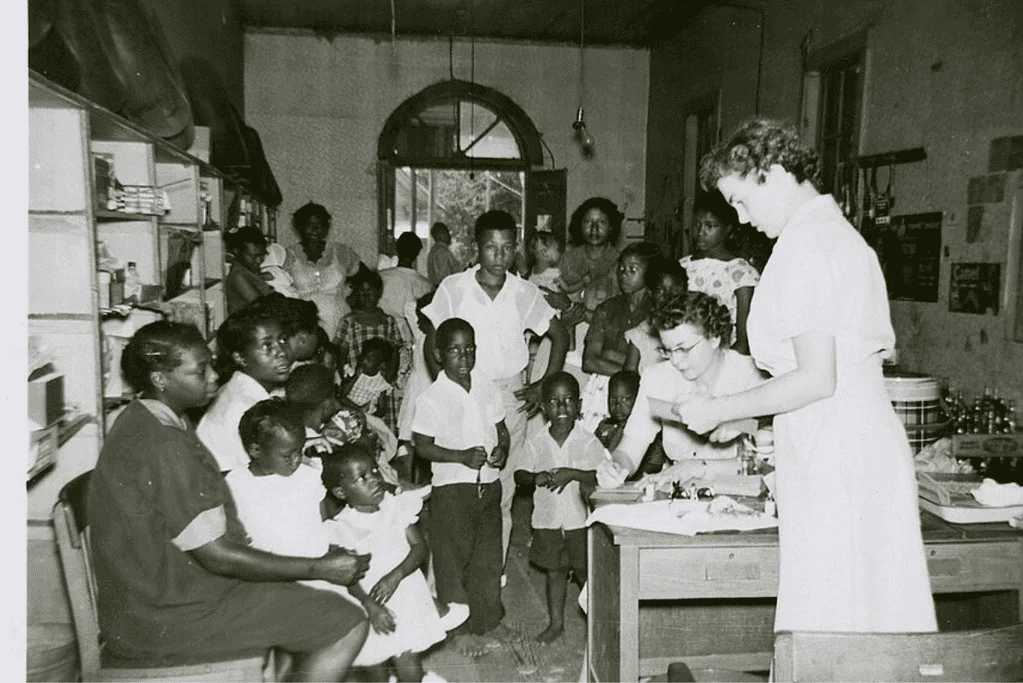
8. Polio Vaccine (1955)
The Menace of Polio Looms Large
Few diseases evoked as much fear as polio in the first half of the 20th century.
This debilitating viral illness, which primarily affected children, led to severe paralysis and often death.
Epidemics were frequent, especially in the warmer months, turning public spaces into danger zones.
Parents were gripped by anxiety, unsure how to protect their children from this invisible enemy.
The desperate need for a solution was palpable as polio victims, many confined to iron lungs, became a common sight in hospitals across America and other parts of the world.
Salk’s Triumph Against Tremendous Odds
Enter Dr. Jonas Salk, a dedicated and ambitious medical researcher.
Believing in the possibility of a “killed-virus” vaccine, Salk and his team began exhaustive research in the early 1950s.
His approach was met with skepticism by many in the scientific community, but Salk pressed on.
By 1955, after extensive trials involving nearly two million children, the results were in: the vaccine was safe and over 90% effective.
The announcement of the vaccine’s success was met with jubilation.
Salk, who chose not to patent his discovery, became an instant hero, having gifted the world a defense against a formidable adversary.
The Beginning of the End for Polio
Post-1955, mass immunization campaigns took off in earnest.
The polio vaccine and later advancements by Dr. Albert Sabin, who developed an oral version, led to dramatic declines in polio cases.
Countries that once grappled with devastating outbreaks started reporting fewer and fewer cases.
Today, thanks to these vaccines and global immunization efforts, polio is on the brink of eradication, with only a handful of cases reported annually.
The polio vaccine story is one of the most iconic chapters in the annals of historical medical breakthroughs, showcasing the power of science, determination, and collaboration.
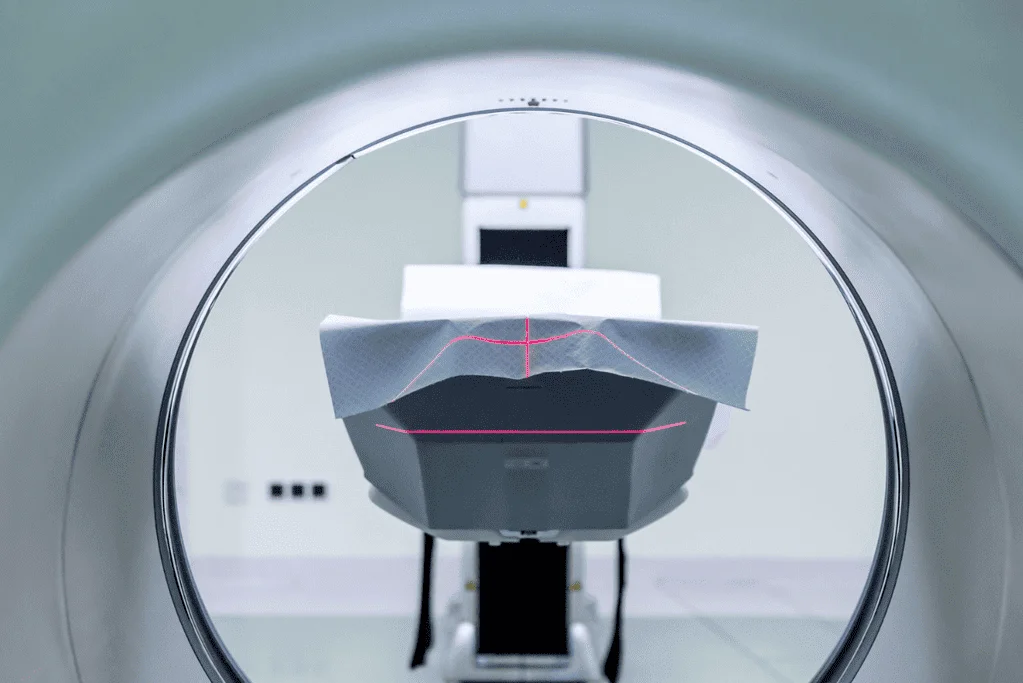
9. MRI (Magnetic Resonance Imaging) (1970s)
Beyond X-rays: A Quest for Better Imaging
By the mid-20th century, X-rays had revolutionized medical diagnostics, offering a non-invasive window into the human body.
However, their scope was limited, especially regarding soft tissues like the brain, muscles, and internal organs.
The need for more detailed, contrast-rich imaging without the ionizing radiation of X-rays was evident.
This backdrop set the stage for developing a groundbreaking technology that would take medical imaging into a new dimension: Magnetic Resonance Imaging (MRI).
Lauterbur and Mansfield’s Magnetic Vision
The concept of MRI is rooted in nuclear magnetic resonance, a phenomenon well-known in the realm of chemistry and physics.
However, the innovative thinking of Dr. Paul Lauterbur and Sir Peter Mansfield in the 1970s transitioned this principle into a tool for medical imaging.
Lauterbur introduced the idea of using gradient fields, allowing for spatial localization, effectively producing a two-dimensional image.
On the other hand, Mansfield furthered the technique with advancements that significantly reduced the scan time and improved image clarity.
Their combined efforts transformed MRI from a theoretical concept into a practical diagnostic tool.
Unveiling the Body’s Innermost Secrets
The introduction of MRI was a watershed moment in medical diagnostics.
Offering unparalleled views of soft tissues, MRI became indispensable in detecting many conditions, from brain tumors to ligament tears.
Its non-invasive nature and the absence of ionizing radiation made it a preferred choice for many diagnostic needs.
Over the decades, MRI technology has seen continuous advancements, with improvements in image resolution, speed, and the advent of functional MRI (fMRI) which measures and maps the brain’s activity.
Today, MRIs are a staple in medical facilities worldwide, a testament to the pioneering work of the 1970s and the relentless drive to peer deeper into the human body.
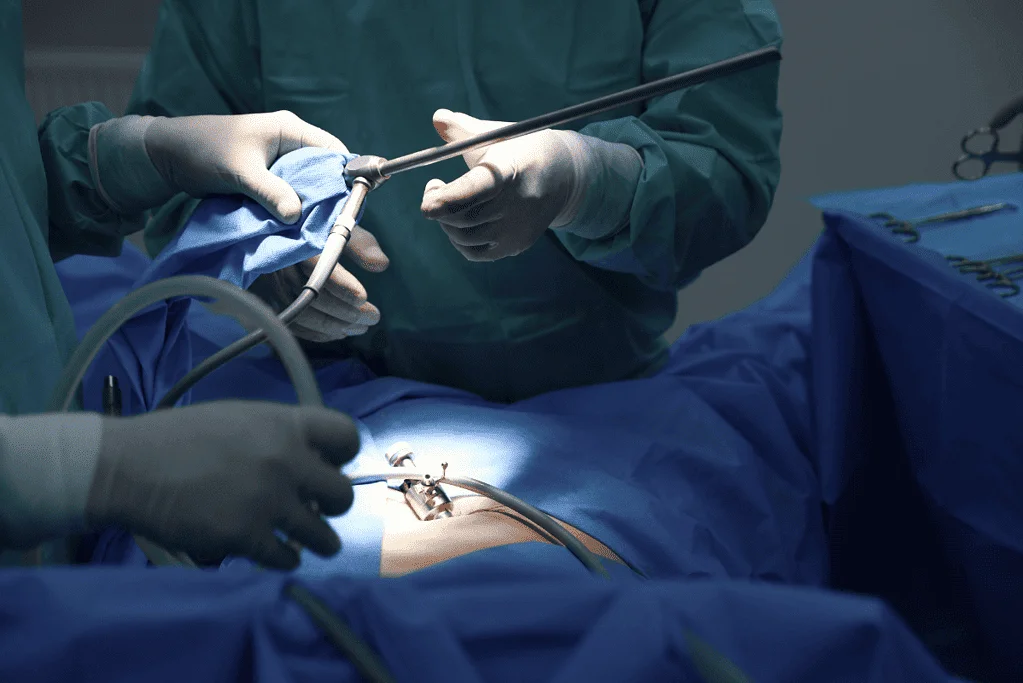
10. Laparoscopic Surgery (1980s)
The Vision for Minimally Invasive Procedures
Traditional open surgeries, with their long incisions and significant tissue disruption, often result in prolonged recovery times, visible scarring, and increased risks of complications.
By the late 20th century, as technological advancements began converging with medical aspirations, a vision emerged: what if surgeries could be performed with minimal external incisions, leading to faster recovery and reduced trauma?
This idea laid the groundwork for the development of laparoscopic surgery, a paradigm shift in the surgical realm.
The Rise of the “Keyhole” Approach
Laparoscopic surgery, often dubbed “keyhole surgery,” was a product of the 1980s, though its rudimentary forms trace back even earlier.
Using a laparoscope—a slender tool fitted with a camera and light source—surgeons could now view the internal surgical site on a video monitor without making a large incision.
Instead, several small incisions accommodated the laparoscope and specialized surgical instruments.
This approach allowed for precision and flexibility, with Dr. Philippe Mouret performing the first laparoscopic cholecystectomy (gallbladder removal) in 1987, signaling the method’s broader surgical potential.
A New Era in Surgical Interventions
Laparoscopic surgery quickly gained traction, offering numerous benefits over traditional methods: reduced pain, shorter hospital stays, quicker recoveries, and minimal scarring.
As the 1980s progressed, the technique’s applications expanded to include appendectomies, hernia repairs, and complex procedures like gastric bypass surgeries.
With the integration of robotic technology in subsequent years, laparoscopic surgery became even more precise and versatile.
Today, it is a hallmark of modern surgical innovation, illustrating the medical community’s unyielding commitment to improving patient outcomes and experiences.
11. Robot-Assisted Surgery (2000s)
The Intersection of Robotics and Medicine
As the dawn of the new millennium approached, two rapidly advancing fields, robotics and medicine, began to converge.
While minimally invasive surgeries, like laparoscopy, were already transforming the surgical landscape, there remained limitations in terms of dexterity, precision, and visualization.
The 2000s marked a significant shift, as integrating robotic technology into surgical procedures promised to overcome these challenges, ushering in the era of robot-assisted surgery.
Da Vinci Leads the Charge
The Da Vinci Surgical System pioneered robot-assisted surgery in the early 2000s.
Equipped with multiple arms, high-definition 3D visualization, and advanced controls that translated a surgeon’s hand movements into micro-movements of the robot, the system offered unparalleled precision.
Procedures that were once technically challenging or impossible due to the limitations of human hands could now be performed with robotic finesse.
Surgeons operated from a console, manipulating the robot’s arms, which handled the surgical instruments with remarkable dexterity and stability.
A Revolution in the Operating Room
The impact of robot-assisted surgery on patient outcomes was profound.
Enhanced visualization allowed for better tissue differentiation, while the system’s precision reduced the risks of unintended tissue damage.
Patients benefited from smaller incisions, reduced pain, quicker recovery times, and fewer complications.
Over the years, the applications of robot-assisted surgery have expanded, from urological procedures to cardiothoracic and gynecological surgeries.
As technological advancements continue, the fusion of robotics and medicine exemplifies the endless possibilities when human ingenuity meets cutting-edge technology, reshaping the future of healthcare.
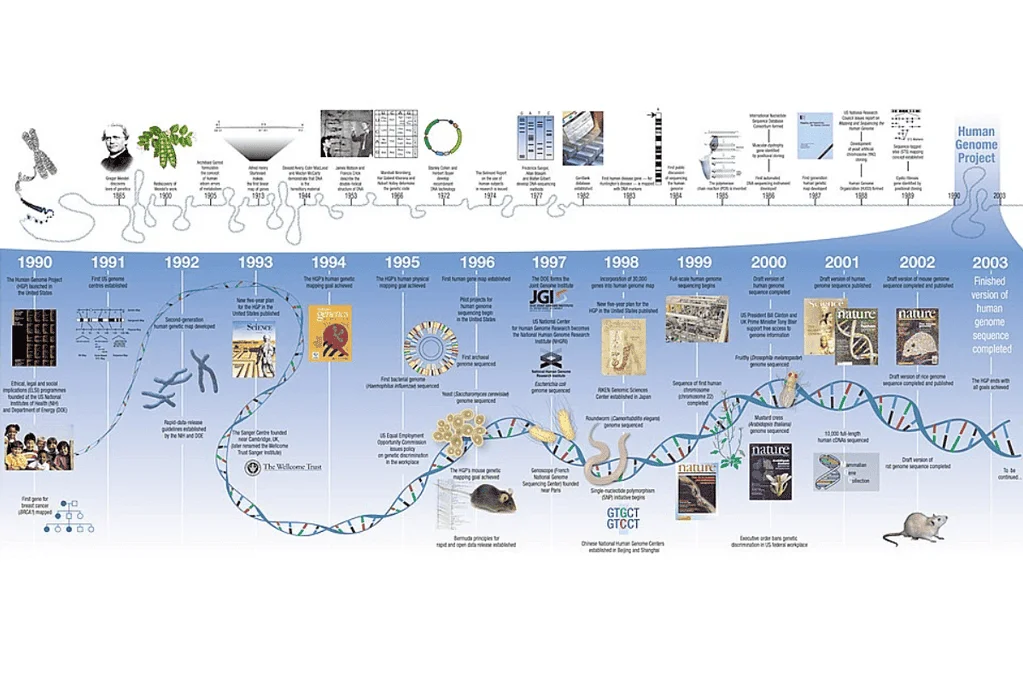
12. Human Genome Project Completion (2003)
Unlocking Humanity’s Genetic Blueprint
The mystery surrounding what makes us human has fascinated scholars, scientists, and dreamers for centuries.
This profound curiosity culminated in one of the most ambitious scientific endeavors ever undertaken: The Human Genome Project (HGP).
Launched in 1990, the HGP aimed to decode the entire human genetic makeup, mapping all the genes—collectively known as the genome—found in human DNA.
This quest, blending biology, computer science, and groundbreaking technology, promised insights into our nature and the potential to revolutionize medicine.
A Global Collaboration’s Monumental Achievement
The HGP was a mammoth task involving a consortium of researchers worldwide.
These international teams faced the challenge of sequencing over 3 billion DNA base pairs, which many deemed impossible at the project’s inception.
But, fueled by collaborative spirit, technological advancements, and sheer determination, these scientists defied expectations.
In 2003, the project was completed two years ahead of schedule, presenting a comprehensive map of the human genome to the world.
The Ripple Effects of a Genetic Milestone
With the human genome laid bare, the repercussions were profound.
The HGP paved the way for personalized medicine, where treatments could be tailored based on an individual’s genetic makeup.
It offered insights into the genetic basis of numerous diseases, unlocking potential pathways for cures and interventions.
Furthermore, researchers gained invaluable insights into human evolution and migration patterns by understanding genetic variations.
Almost two decades since its completion, the HGP continues to shape research, medical treatments, and our understanding of humanity, standing as one of the crowning achievements in the annals of scientific discovery.
13. CRISPR Gene Editing (2012)
A New Dawn in Genetic Manipulation
For decades, the dream of precisely editing the DNA of living organisms hovered tantalizingly on the horizon of genetic research.
While various methods for gene modification existed, they were often cumbersome, inefficient, or lacked precision.
That landscape dramatically shifted in 2012 with the introducing of a revolutionary technology: CRISPR-Cas9, a tool that promised to rewrite genetic engineering rules.
CRISPR: Nature’s Scissors Go Hi-Tech
The origins of CRISPR (Clustered Regularly Interspaced Short Palindromic Repeats) are rooted in the natural world, specifically in bacteria.
Bacteria use CRISPR systems as an immune mechanism, snipping away the DNA of invading viruses.
Researchers Jennifer Doudna and Emmanuelle Charpentier recognized the potential of this mechanism and adapted it into a versatile tool.
Combining the CRISPR system with the Cas9 protein created a method to target specific DNA sequences in any organism, making precise cuts.
Essentially, they had turned nature’s rudimentary defense mechanism into a state-of-the-art genetic scalpel.
The Profound Implications of DNA Editing
CRISPR-Cas9’s introduction was met with both exhilaration and caution.
Its applications seemed limitless: correcting genetic disorders, enhancing crops, eradicating pests, and even bringing extinct species back to life.
The medical field, especially, saw CRISPR as a beacon of hope for treating conditions once deemed incurable.
However, the technology also raised ethical concerns, particularly around editing the human germline—changes that would be passed on to subsequent generations.
As we navigate the 21st century, CRISPR stands as a testament to human ingenuity, showcasing the immense potential and profound responsibilities of wielding the power to reshape life.
14. Targeted Cancer Therapies (the 2000s)
Moving Beyond the Broad-Brush Approach
For much of medical history, cancer treatments were often akin to using a broad brush, affecting both cancerous and healthy cells.
Traditional chemotherapy, while effective to a degree, also damages healthy tissues, leading to many side effects.
As the 21st century dawned, there was a growing realization that cancer, in its myriad forms, was not a monolithic enemy.
Each type and even individual tumors had distinct genetic markers and pathways.
The 2000s heralded a new approach to cancer treatment, shifting from the generalized to the specific: targeted cancer therapies.
Zooming in on Cancer’s Unique Vulnerabilities
Targeted cancer therapies are designed to interfere with specific molecules necessary for the growth and spread of cancer.
Researchers could develop drugs targeting these cancerous pathways by understanding a tumor’s unique genetic and molecular profile, leaving healthy cells largely unharmed.
This precise method of attack meant that these therapies often had fewer side effects than traditional chemotherapy.
Drugs like imatinib (Gleevec), which transformed the treatment of chronic myeloid leukemia by targeting a specific protein responsible for the cancer’s growth, became poster children for the promise of targeted therapies.
A New Frontier with Evolving Challenges
The rise of targeted therapies has undeniably changed the face of cancer treatment, offering hope to countless patients and introducing a more personalized approach to oncology.
Yet, with these historical medical breakthroughs come challenges.
Some cancers evolve resistance to targeted drugs, and pinpointing the exact molecular vulnerabilities of a tumor remains a complex task.
Additionally, the development of these specialized drugs can be costly.
Nonetheless, as research continues and our understanding deepens, the 2000s will be remembered as the era when the fight against cancer took a decisive turn, emphasizing precision, personalization, and promise.
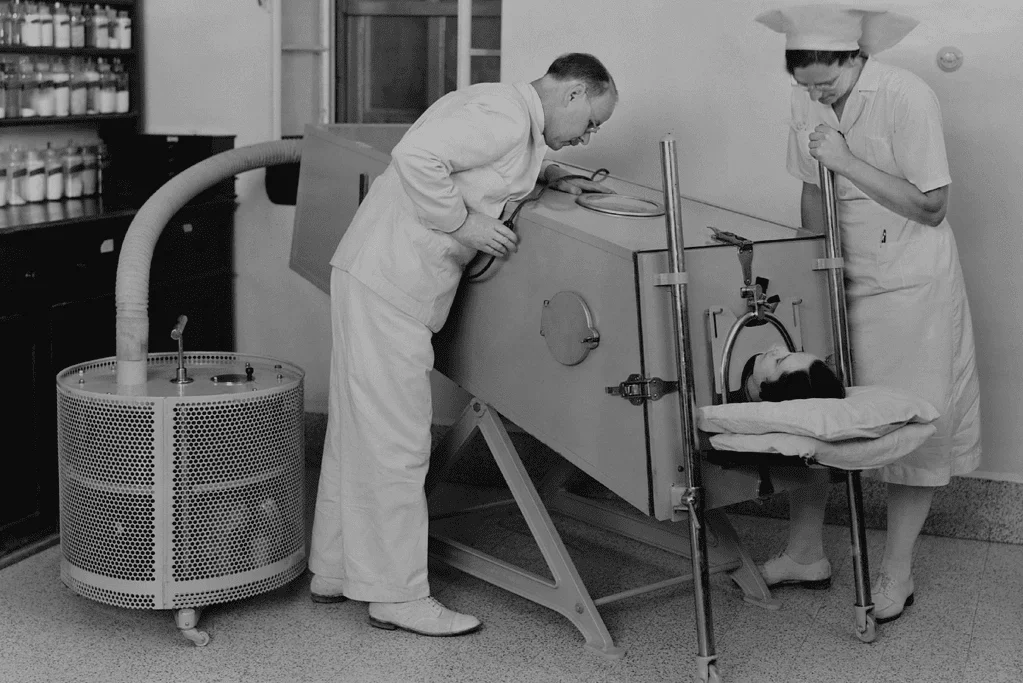
Wrap-up: Historical Medical Breakthroughs
As we look back on this whirlwind tour of historical medical breakthroughs from 1792 onwards, it’s hard not to be awestruck by the sheer magnitude of progress we’ve witnessed.
Each milestone, from the simplest to the most technologically advanced, is a testament to humanity’s relentless drive to improve, innovate, and uplift.
In its ceaseless quest, the medical field has repeatedly turned the seemingly impossible into reality, reshaping our world in ways our ancestors could have only imagined.
These historical medical breakthroughs remind us of the boundless potential of human ingenuity and collaboration.
They serve as powerful beacons, illuminating the path forward and inspiring future generations to push the boundaries further.
As we stand on the shoulders of these medical giants, we’re left eager and excited for the next chapter of historical medical breakthroughs that await just beyond the horizon.
For more content on modern technological milestones, this time a little more focused on fun, check out my article From Pong to PlayStation 5: 17 Historical Milestones in the Evolution of Video Games!

FAQs: Historical Medical Breakthroughs
Artificial Intelligence (AI) is poised to revolutionize medicine, offering transformative solutions that span diagnostics, treatment, research, and patient care.
Leveraging vast datasets and sophisticated algorithms, AI can assist in early and accurate disease detection, often identifying subtle patterns in imaging or data the human eye might overlook.
Beyond diagnostics, AI enhances drug discovery by predicting how different compounds can affect diseases, optimizing treatment plans tailored to individual patient profiles, and monitoring patient vitals and adherence in real-time.
Additionally, with machine learning models, AI provides healthcare professionals with predictive analytics, forecasting patient outcomes and potential complications.
These advancements can potentially enhance the precision and efficiency of medical care and democratize healthcare access, especially in regions with limited specialist resources.
While significant strides have been made in understanding the underlying mechanisms of diseases like Alzheimer’s and Parkinson’s, a definitive “cure” remains elusive.
Research into these neurodegenerative conditions has broadened our grasp of their genetic, molecular, and environmental factors.
Recent advances in fields like genomics, neuroimaging, and biomarker identification have improved early diagnosis and led to the development of therapies that can potentially slow disease progression.
However, the complexity of these diseases, with their multifaceted origins and manifestations, means that we’re likely to see incremental improvements in management and treatment before we arrive at a complete cure.
Ongoing research, clinical trials, and global collaborative efforts continue to provide hope for better therapeutic interventions in the near future.
The future of organ transplantation is heading towards more sustainable, efficient, and patient-specific solutions.
Current research and advancements point to several promising directions: lab-grown organs using stem cells, which have the potential to reduce transplant waitlists and address organ compatibility issues; xenotransplantation, where genetically modified animal organs could be used for human transplants; and 3D bioprinting, where organs are ‘printed’ layer by layer using cellular “inks”.
Furthermore, there’s a growing focus on refining immunosuppressive therapies to prevent organ rejection and developing methods to repair and regenerate damaged organs inside the body.
As these technologies mature, the hope is to alleviate the chronic shortage of donor organs and offer transplantation solutions tailored to individual patient needs, minimizing risks and maximizing long-term success.
References: Historical Medical Breakthroughs
“5 Medical Advances That Will Change Patient Care.” AAMC, www.aamc.org/news/5-medical-advances-will-change-patient-care.
Calver, Tom. “75 Years of Penicillin in People | University of Oxford.” Www.ox.ac.uk, 12 Feb. 2016, www.ox.ac.uk/news/science-blog/75-years-penicillin-people.
CDC. “Vaccine Basics .” Centers for Disease Control and Prevention, 2019, www.cdc.gov/smallpox/vaccine-basics/index.html.
Chodos, Alan. “November 8, 1895: Roentgen’s Discovery of X-Rays.” @Apsphysics, Nov. 2001, www.aps.org/publications/apsnews/200111/history.cfm.
“ClinicalTrials.gov.” Www.clinicaltrials.gov, www.clinicaltrials.gov/study/NCT01760005. Accessed 8 Feb. 2024.
Gaynes, Robert. “The Discovery of Penicillin—New Insights after More than 75 Years of Clinical Use.” Emerging Infectious Diseases, vol. 23, no. 5, May 2017, pp. 849–853, www.ncbi.nlm.nih.gov/pmc/articles/PMC5403050/, https://doi.org/10.3201/eid2305.161556.
Harvard Library. “Germ Theory.” Contagion – CURIOSity Digital Collections, 2022, curiosity.lib.harvard.edu/contagion/feature/germ-theory.
Hessel, Eugene A. “A Brief History of Cardiopulmonary Bypass.” Seminars in Cardiothoracic and Vascular Anesthesia, vol. 18, no. 2, 10 Apr. 2014, pp. 87–100, https://doi.org/10.1177/1089253214530045. Accessed 22 May 2021.
“History of Polio: Outbreaks and Vaccine Timeline.” Mayo Clinic, www.mayoclinic.org/diseases-conditions/history-disease-outbreaks-vaccine-timeline/polio.
“Laparoscopy.” Www.hopkinsmedicine.org, www.hopkinsmedicine.org/health/treatment-tests-and-therapies/laparoscopy.
“Lilly.com | Eli Lilly and Company.” Www.lilly.com, www.lilly.com/discovery/100-years-of-insulin.
manishma @stanford.edu, img src=’https://med stanford edu/news/media-contacts/rosanne_spector/_jcr_content/image img 620 high jpg/spector-rosanne-90 jpg’ alt=’Rosanne Spector’> Rosanne Spector Rosanne Spector is the editor of Stanford Medicine magazine in the Office of Communications Email her at. “AI Explodes: Stanford Medicine Magazine Looks at Artificial Intelligence in Medicine.” News Center, 6 June 2023, med.stanford.edu/news/all-news/2023/11/stanford-medicine-magazine.html.
Mayo Clinic. “General Anesthesia – Mayo Clinic.” Mayoclinic.org, 2018, www.mayoclinic.org/tests-procedures/anesthesia/about/pac-20384568.
—. “Robotic Surgery – Mayo Clinic.” Mayoclinic.org, 6 May 2022, www.mayoclinic.org/tests-procedures/robotic-surgery/about/pac-20394974.
“Medications in Trials | Parkinson’s Disease.” Www.michaeljfox.org, www.michaeljfox.org/medications-trials.
Medline Plus. “What Are Genome Editing and CRISPR-Cas9?” Medlineplus.gov, MedlinePlus, 22 Mar. 2022, medlineplus.gov/genetics/understanding/genomicresearch/genomeediting/.
National Human Genome Research Institute. “Homepage.” National Human Genome Research Institute (NHGRI), Genome.gov, 2020, www.genome.gov/.
—. “The Human Genome Project.” Genome.gov, National Human Genome Research Institute, 22 Dec. 2020, www.genome.gov/human-genome-project.
National Institute of Biomedical imaging and bioengineering. “Magnetic Resonance Imaging (MRI).” National Institute of Biomedical Imaging and Bioengineering, 17 July 2018, www.nibib.nih.gov/science-education/science-topics/magnetic-resonance-imaging-mri.
National Research Council (US) Committee to Update Science, Medicine, and Animals. “A Theory of Germs.” Nih.gov, National Academies Press (US), 2017, www.ncbi.nlm.nih.gov/books/NBK24649/.
NHS Choices. “Overview – Laparoscopy (Keyhole Surgery).” NHS, 2019, www.nhs.uk/conditions/laparoscopy/.
“Robotic Surgery: MedlinePlus Medical Encyclopedia.” Medlineplus.gov, 2018, medlineplus.gov/ency/article/007339.htm.
Salk Institute for Biological Studies. “About Jonas Salk – Salk Institute for Biological Studies.” Salk Institute for Biological Studies, 2015, www.salk.edu/about/history-of-salk/jonas-salk/.
Smith, Mike. “CRISPR.” Genome.gov, 2023, www.genome.gov/genetics-glossary/CRISPR.
Speizer, Irwin. “This 1950s Heart-Lung Machine Revolutionized Cardiac Surgery.” Smithsonian, Smithsonian.com, 24 May 2019, www.smithsonianmag.com/innovation/this-1950s-heart-lung-machine-revolutionized-cardiac-surgery-180972273/.
“Targeted Drug Therapy | American Cancer Society.” Www.cancer.org, www.cancer.org/cancer/managing-cancer/treatment-types/targeted-therapy.html.
“Targeted Therapy: What It Is, Process & Side Effects.” Cleveland Clinic, my.clevelandclinic.org/health/treatments/22733-targeted-therapy.
The. “A Look at Each Vaccine: Polio Vaccine | Children’s Hospital of Philadelphia.” Chop.edu, 21 Aug. 2014, www.chop.edu/centers-programs/vaccine-education-center/vaccine-details/polio-vaccine.
The Wood Library-Museum of Anesthesiology. “History of Anesthesia – Interactive Timeline.” Woodlibrarymuseum.org, 2015, www.woodlibrarymuseum.org/history-of-anesthesia/.
“Transplant Advances.” Mayo Clinic, www.mayoclinic.org/tests-procedures/heart-transplant/multimedia/transplant-advances-video/vid-20139202. Accessed 8 Feb. 2024.
Tretkoff, Ernie. “July, 1977: MRI Uses Fundamental Physics for Clinical Diagnosis.” @Apsphysics, 2019, www.aps.org/publications/apsnews/200607/history.cfm.
Tubiana, M. “[Wilhelm Conrad Röntgen and the Discovery of X-Rays].” Bulletin de l’Academie Nationale de Medecine, vol. 180, no. 1, 1 Jan. 1996, pp. 97–108, pubmed.ncbi.nlm.nih.gov/8696882/.
Vecchio, Ignazio, et al. “The Discovery of Insulin: An Important Milestone in the History of Medicine.” Frontiers in Endocrinology, vol. 9, no. 613, 23 Oct. 2018. National Library of Medicine, www.ncbi.nlm.nih.gov/pmc/articles/PMC6205949/, https://doi.org/10.3389/fendo.2018.00613.
Wayman, Erin. Here Are Some of the Biggest Medical Advances in 2023. 14 Dec. 2023, www.sciencenews.org/article/medical-advances-vaccines-drugs-2023.
